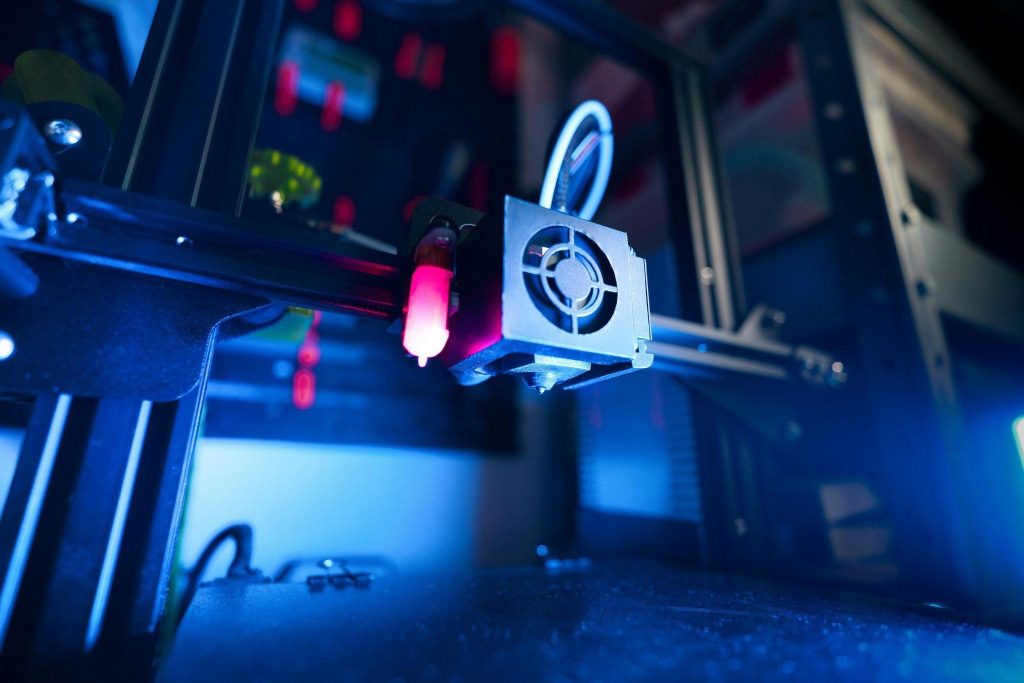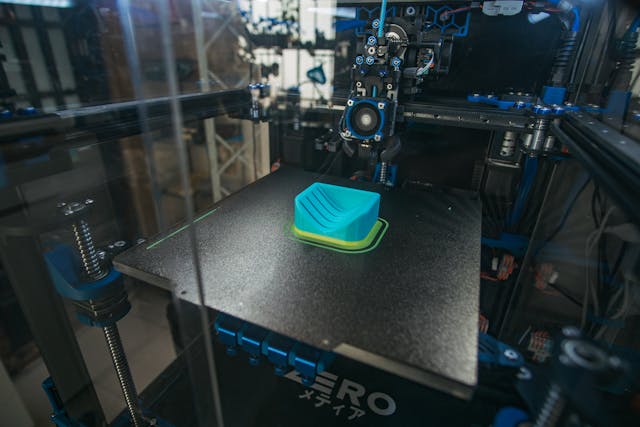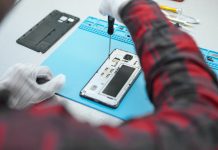Creating a product can be exciting. You’re solving a problem while creating opportunities for your customers and for your business.
While excitement is an important part of the process, what comes after includes a mix of challenges and triumphs. Through those experiences, you might yearn for better ways to develop your product, and while there is no perfect answer, one thing might help more than you imagine: 3D printers.
It turns out that 3D printers can help you launch products faster. They can also help you design smarter and improve your quality in both obvious and subtle ways.
Today, we can explore some specific elements of 3D printing in development and production cycles to see what they might offer you.
3D Printers in Prototyping
Early in the development cycle, prototyping eats up time and money. Yet, it remains essential for product quality and production efficiency. Across industries, it takes an average of four to eight weeks to mock up a new prototype. If changes are needed, more weeks disappear in the development cycle.
3D printing turns this idea on its head. 3D printers save time and money by simplifying development, and it can bring average prototype times down to four weeks or less, easily cutting development time in half.
By taking a closer look at how 3D printers benefit prototyping, you can see exactly what they might offer your organization and just what value you might extract from an investment in this technology.
Shorter Lead Times
How do 3D printers cut lead times in half? A few important things play into development cycles.
First, 3D printers can build a wide range of parts without any retooling. You can design the entire thing in CAD, and then put it into the printer. Hit the print button, and you get your part. While designs can take hours to day to print, the lack of refitting and retooling cuts significant time out of the process.
This is even more evident when making iterations in the prototype’s design. You can print a part, test it, find what you want to change, and then make the changes in the CAD file. Then, hit print again. Compared to machining parts, injection molds, and other common prototyping techniques, you’re saving a ton of time.
On top of that, the digital design process itself can benefit from technological advances. Using AI to rapidly iterate, or simply by diving into open source libraries, you can view a wide range of ideas and experiment with them, all early in development. And, you can test far more physical parts in the same time frame.
In this way, shorter lead times also improve prototype quality.
Cost Efficiency
Cost efficiency benefits stem from the same sources. 3D printers can handle a huge variety in design shapes and complexities, all with the same equipment and in the same time frames. The lack of equipment overhauls saves plenty of money while you prototype.
Additionally, saving time usually translates to lowering costs. If a development team is finished several weeks ahead of your previous schedule, that’s labor and overhead that isn’t factoring into your prototyping costs.
Perhaps most telling, though, is the cost of materials. 3D printing materials vary in use and function. For many aspects of prototyping, you can use less-durable materials in order to test mechanisms and visuals. For that, you can select 3D printing rolls that save as much money as possible, and save the higher-quality, higher-cost materials for when they are needed.
Ease of Use
An easily overlooked benefit of 3D printing is the ease of use. The printer is a self-contained unit that is ready to go when you acquire it. Printers have a relatively low learning curve, meaning you don’t need specialists or high-skilled technicians to operate the machines.
Instead, anyone on the design team can hit the print button when a design is ready for physical manifestation. This ease of use lowers burdens on design teams and further reduces time and cost investments for each cycle of development.
Ease of use adds another benefit at the same time. While you save time and money, you free up development resources for better designs. The team is spending less time working on and with the equipment, allowing them to focus even more energy and thought into the designs themselves.

3D Printing Iterative Designs
You have a product in full production. You’re building it at scale and selling it. At this point, you can re-evaluate the product and your processes. You can see if there are any manufacturing bottlenecks. You can also get feedback from end users.
Inevitably, you will find points for improvement. Whether it’s a part that wears out prematurely, an issue with assembly, or a function users want but don’t have, there are always reasons to consider changes to your designs.
Once again, 3D printing has a lot to offer. In all of the ways 3D printers aid prototyping, they also aid iterative designs for things in full production.
In addition to those benefits, 3D printers can help you with independent function testing and design off ramps. Let’s delve into those concepts a little deeper.
Independent Function Testing
When you make iterations to something in full production, you essentially want to re-prototype the changes. 3D printers help with that.
Naturally, you can rapidly 3D print the altered components to physically test them without any retooling or refitting. Once again, you can use more affordable materials when viable to save money through this iteration.
Ease of use and shorter lead times still play their parts, and all of these benefits hold up for each iteration you put into your design.
The end result is faster iterations that work better, leading to greater customer satisfaction throughout the lifecycle of any of your products.
Design Offramps
Coming from a very different perspective, 3D printers also help you explore designs and find design offramps. One specific advantage of 3D printing design processes is that you can explore a lot more complexity.
Especially if your printers are part of the production cycle, you can put intricacies into products that are largely impossible with traditional machining, stamping, and other methods. This opens up a ton of design freedom, leading to interesting and often impressive results.
But, complexity can also lead to design dead ends. Even without complexity, some iterative cycles eventually lead to a dead end. In any case, the 3D printing process helps with design offramps.
You can go through your CAD files and back up to a previous design without the dead end, or you can go straight into new prototypes without concerns for ballooning costs.
The freedom granted by 3D printing makes it much easier to take design off ramps and avoid sunk cost traps.
Printing Products at Scale
We got into this a bit when talking about iterative design, but you can use 3D printers as a cornerstone in your full-scale manufacturing. You can outright print products — depending on their design and function.
Even if you can’t print the entire product, you can often print components without sacrificing final quality.
To really see where 3D printers shine in this aspect, we can look at two things. First, we can discuss production scale printers and how they fit into manufacturing. Then, we can consider how these printers open up new design ideas that can consolidate assembly to save time and money while pushing quality even higher.
Production Scale Printers
3D printers are not one-size-fits-all. You can get smaller, simpler printers for smaller, simpler jobs. You can also get production-scale printers that are designed to work at manufacturing scales.
On top of that, printers handle substantially different materials.
This was mentioned earlier, but you can use cheaper materials for small-scale testing and upgrade to more capable printable materials for production. For that, you need the right printer, but that is available.
The end result is that production printers allow you to translate printed prototypes into final products much faster and easier. Production printers cannot handle all aspects of manufacturing, but when you can offload work onto these printers, you gain the many benefits we’ve been discussing today.
Consolidating Assembly
This benefit is easy to miss, but using 3D printers (especially for production) can help with assembly. As products become more complicated, they are often manufactured in more individual components that have to be assembled later.
With 3D printers, you can actually print more precise designs that reduce assembly. Since entire pieces are manufactured as a whole, this doesn’t just reduce the number of components. It also reduces the need for fasteners, glues, and other additional resources that hold your pieces together.
This small trick adds up quickly, saving money on several aspects of production. It also simplifies your assembly process, reducing failure rates and errors. On top of that, products with less assembly tend to have fewer failure points, lasting longer when in regular use.
Overall, when you look through your designs to find ways to consolidate assembly, you improve your process and your product.
Printing Your Future
3D printing is not a silver bullet. It won’t magically simplify and transform all of your production overnight. Instead, it potentially creates surgical solutions to specific issues in your processes.
By exploring 3D printers, you can find clear ways to shorten lead times, improve product quality, empower your teams, and take advantage of technology across the board. As a starting point, look at prototyping, and from there, you can see opportunities around every corner.






